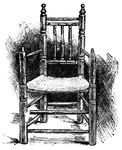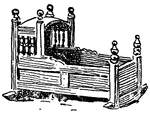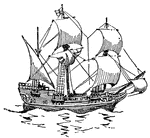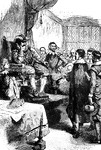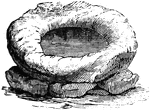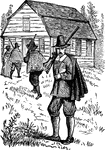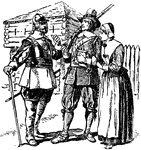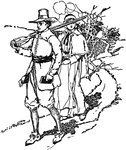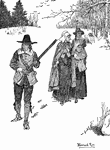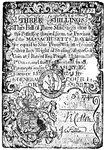Miscellaneous Illustrations of Massachusetts
The Miscellaneous Illustrations of Massachusetts ClipArt gallery offers 42 illustrations related to the Bay State.
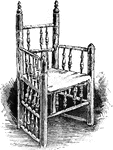
Brewster's Chair
Elder Brewster's Chair. William Brewster was one a pilgrim who rode the Mayflower in 1620.

Elder Brewster's Chest and Dinner-pot
Elder Brewster's chest and dinner-pot. William Brewster was one a pilgrim who rode the Mayflower in…

Silver Massachusetts XII Pence Coin, 1652
Massachusetts XII Pence (XII Pence) Massachusetts Colony coin from 1652. Obverse has an image of a pine…

Floating Battery
"American Floating Battery. I am indebted to the kindness of Peter Force, Esq., of Washington city (editor…
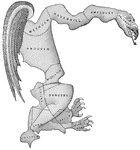
The Gerrymander
Political cartoon of unfairly redrawn congressional districts, origin of the term "gerrymander".
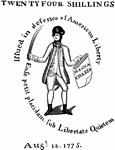
Reverse of a Massachusetts Treasury Note
In 1690, The Massachusetts Bay Colony issued the first paper money in the colonies, called Colonial…
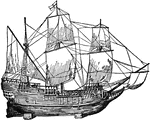
Mayflower
The Mayflower is the ship that the Pilgrims sailed on from England to Plymouth, Massachusetts.
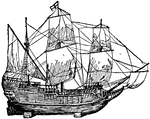
The Mayflower
The ship that transported the Pilgrims from Plymouth, England to Plymouth, Massachusetts, which would…
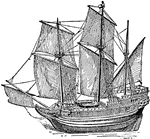
The Mayflower
One of the ships used to transport the English Separatists to Plymouth, Massachusetts.
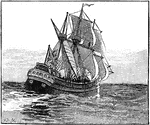
The Mayflower
The ship that transported the English pilgrims from Plymouth, England to Plymouth, Massachusetts in…

Section of Frontal Moraine
Section of frontal moraine on side of Warner Street, Glouchester, Massachusetts.
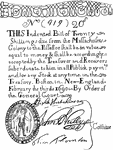
First American Paper Money, 1690
In 1690, The Massachusetts Bay Colony issued the first paper money in the colonies, called Colonial…
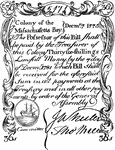
Paper Money, Thirty-Six Shillings Bill, 1775
Thirty-Six Shillings (36 shillings) Massachusetts currency from 1775. Image in lower left of an anchored…
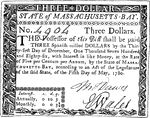
Paper Money, Three Dollar Bill, 1780
Three Dollar ($3) Massachusetts currency from 1780. No image on obverse. Reverse shows the inscription…

Passenger Train
"The first passenger locomotive built in the United States. A year after the Enterprise sailed for India,…
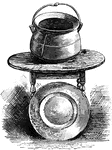
Pot and Platter
A pot and platter belonging to Miles Standish. Miles Standish was a soldier hired by the Pilgrims to…
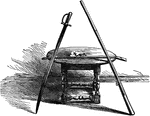
Standish's Sword and Musket Barrel
Captain Myles Standish (sometimes spelled Miles) was an English born military officer hired by the Pilgrims…
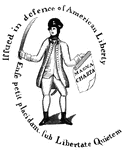
Treasury Note
"Reverse of a Massachusetts Treasury note. This is a fac simile of the device on the back of one of…
